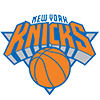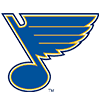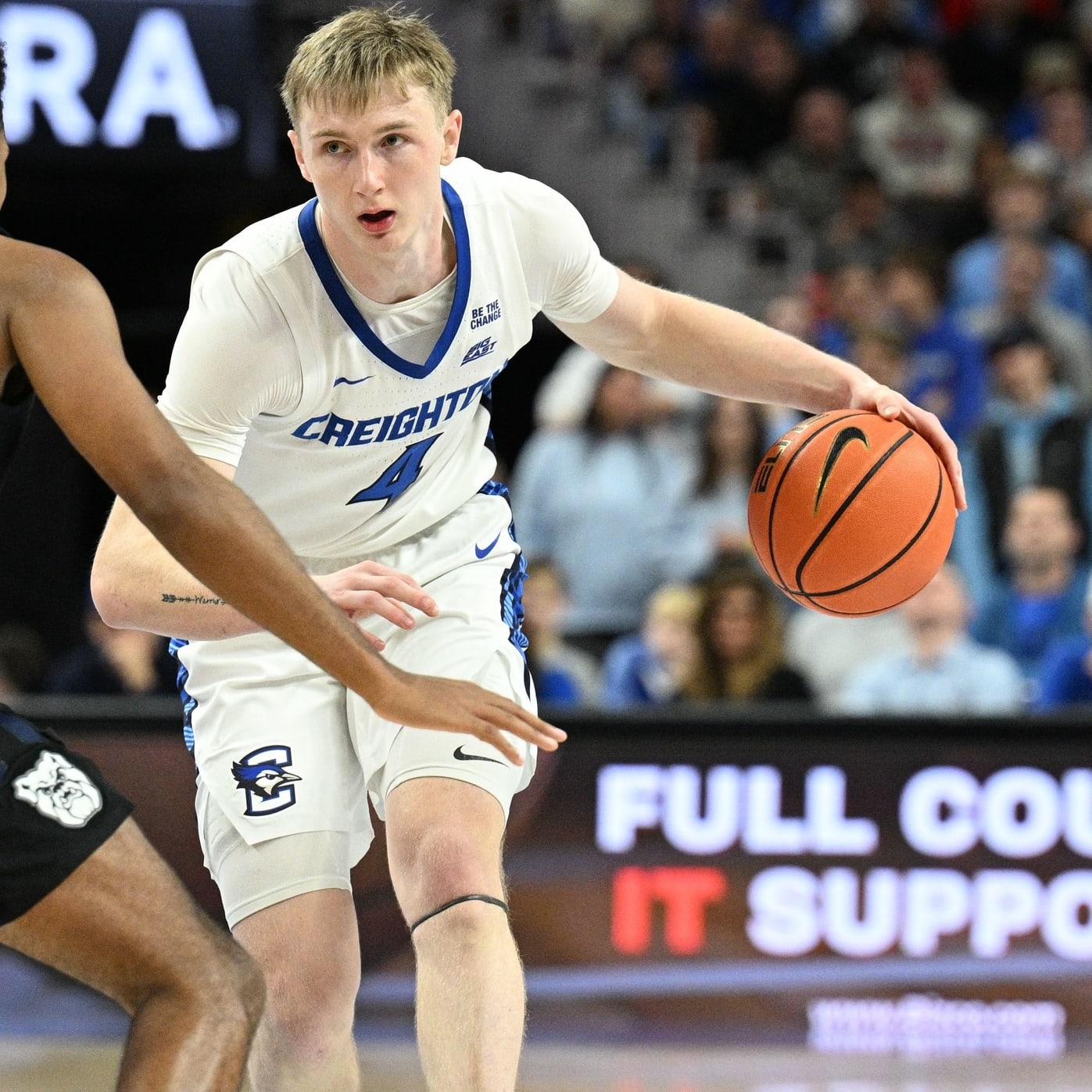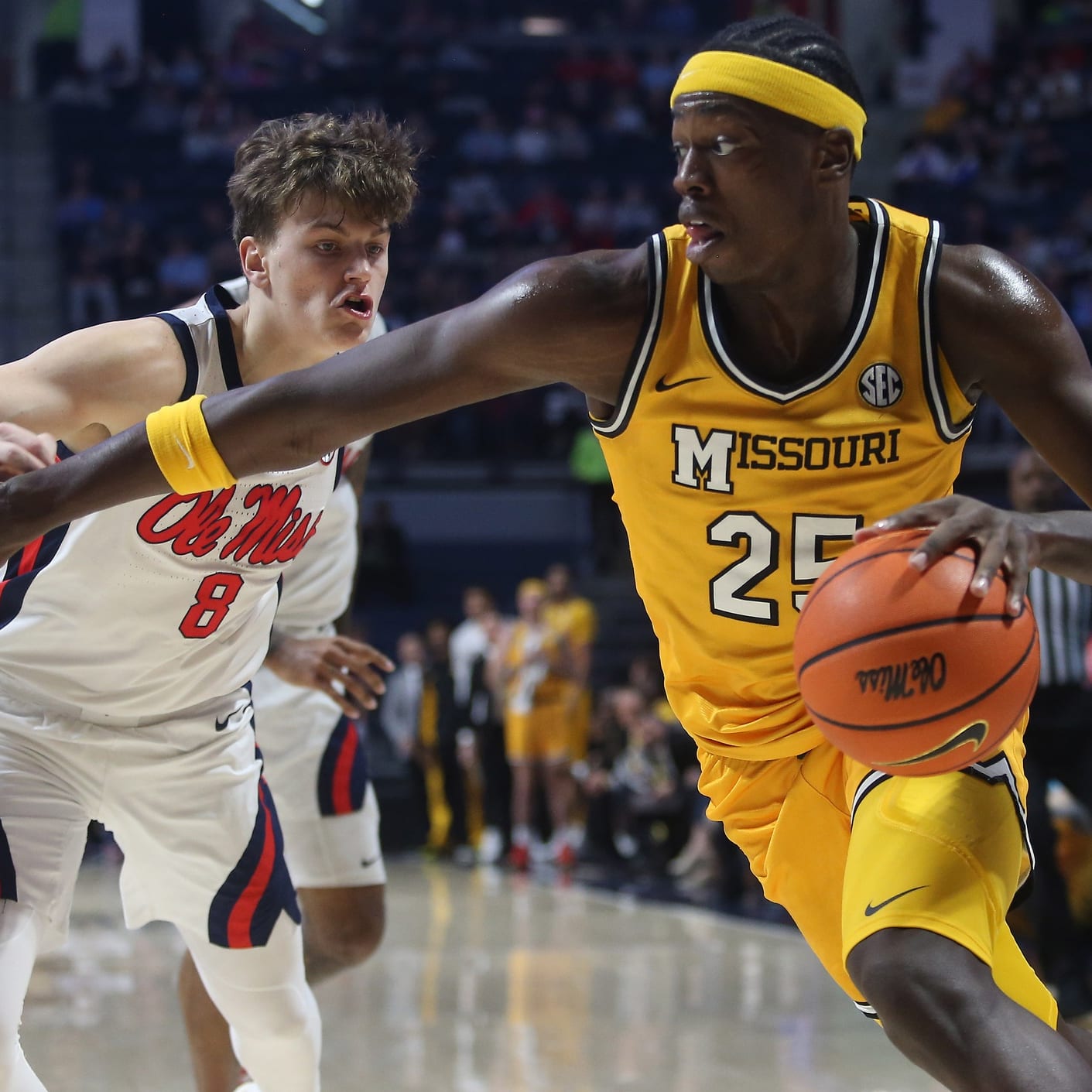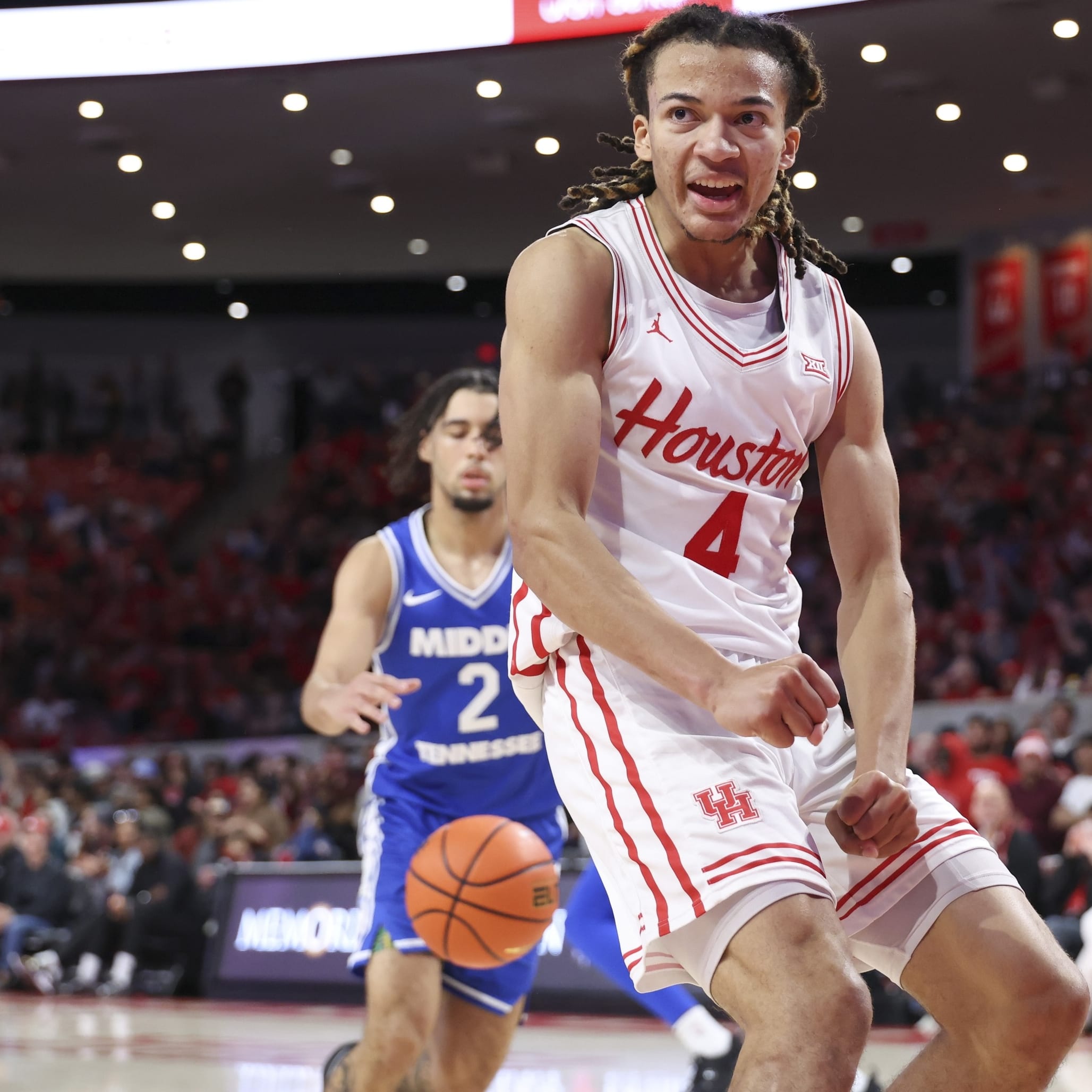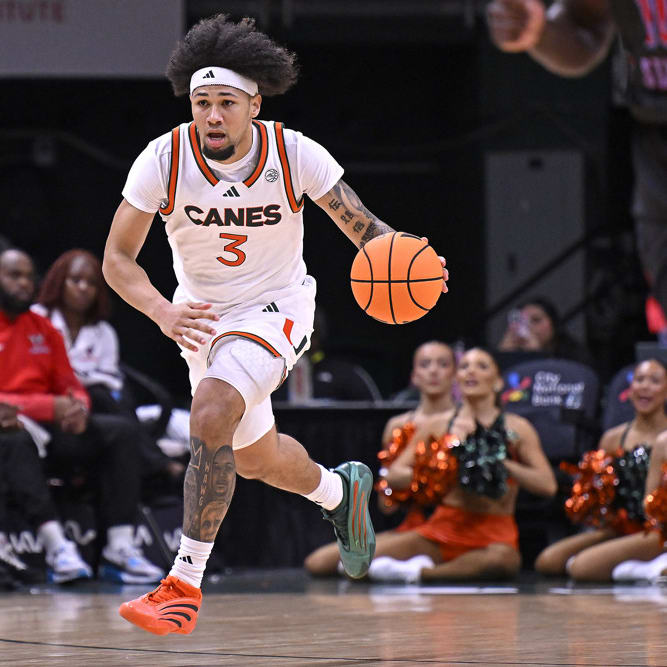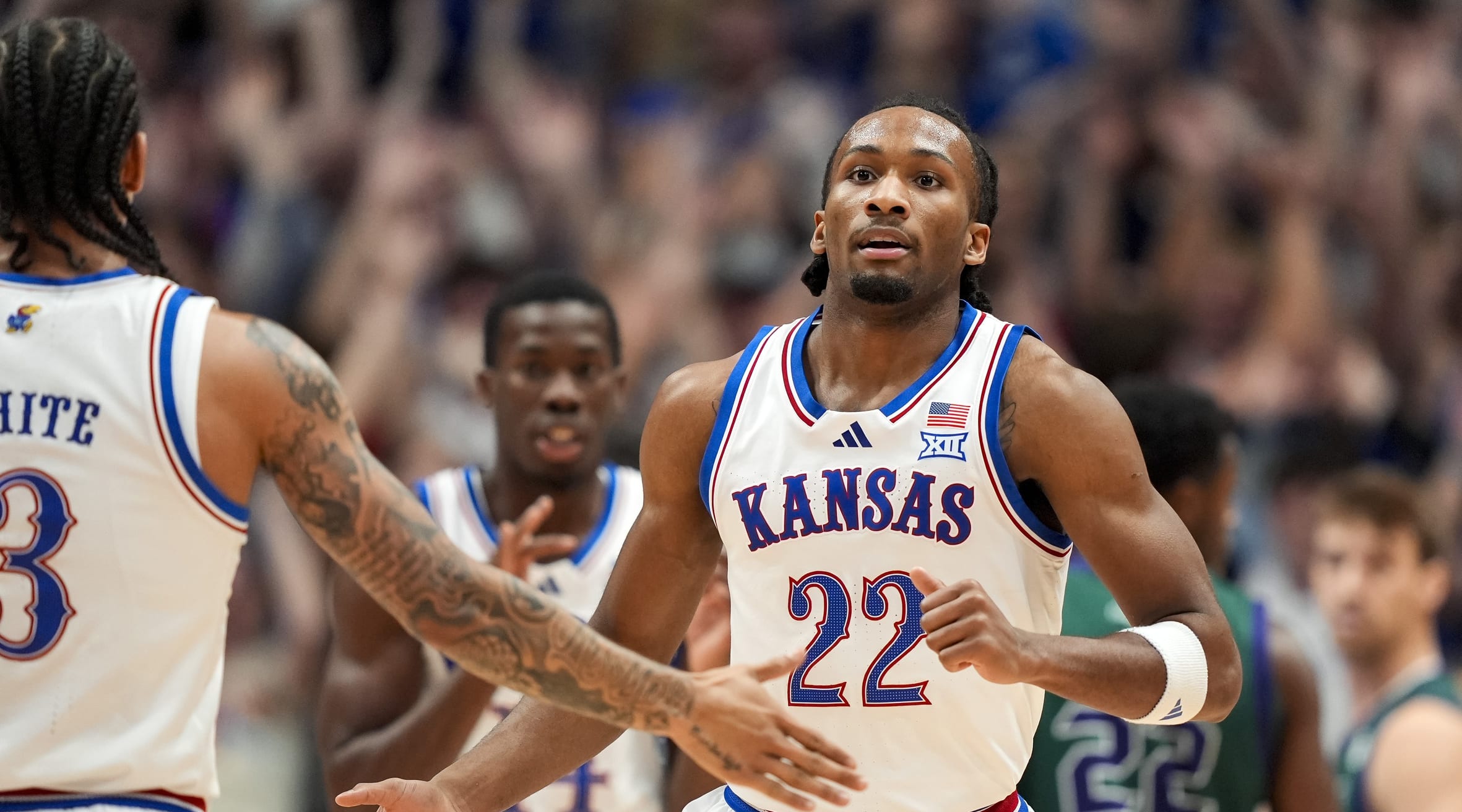March Madness is in full swing and the field is finalized for the 2023 NCAA Women's College Basketball Tournament. The RotoWire hoops team has everything you need to make the best decisions possible when filling out your brackets.
| School Name | Preview |
|---|---|
| Alabama | Alabama struggled to get into a rhythm this year but still earned its second NCAA Tournament bid since 1999. The Crimson Tide won four consecutive games to begin February but are on a four-game skid entering the NCAA Tournament. The program has the sixth-best three-point percentage in the nation due to solid play from Brittany Davis (17.3 ppg, 7.1 rpg, 1.8 spg), Hannah Barber (8.0 ppg, 2.8 apg) and Aaliyah Nye (9.4 ppg), who combined with other Tide players to shoot 43.9 percent from the floor this year. But despite their success, Alabama went just 3-7 against Quad 1 opponents this season, per Warren Nolan. The Crimson Tide are dancing for the second time in the last three years and proved capable of rattling off a winning streak this season, but they seem unlikely to make a deep run this year. |
| Arizona | Arizona is on a three-game skid heading into the NCAA Tournament, capped off by a loss to UCLA in the quarterfinals of the Pac-12 Tournament, where the Bruins outpaced the Wildcats on the boards, 46-27. The Wildcats also won just six of their 14 games against Quad 1 opponents this year, per Warren Nolan. Shaina Pellington (13.3 ppg, 3.7 apg) propels the offense, while Esmery Martinez (10.5 ppg, 8.3 rpg) and Cate Reese (12.6 ppg, 5.9 rpg) also offer solid contributions. The Pac-12 isn't a particularly fast-paced conference, so it's concerning that Arizona allowed 64.8 points per game, which fell in the 49th percentile of teams nationwide. However, the Wildcats protected the ball and forced a 22.0 percent turnover rate on defense. Momentum is working against the Wildcats, and they could struggle to keep up if they face a fast-paced program in the NCAA Tournament. |
| Baylor | After going 28-7 during coach Nicki Collen's first season at Baylor last year, the Bears took a step back this year and lost double-digit games for the first time since the 2009-10 campaign. The team also had a cold spell to finish the year, losing six of its last nine games. Baylor relies on its passing ability, led by Sarah Andrews (15.0 ppg, 4.3 apg) and Jaden Owens (7.9 ppg, 5.7 apg). Caitlin Bickle (12.2 ppg, 7.1 rpg) and Darianna Littlepage-Buggs (11.0 ppg, 9.4 rpg) were two of three other Lady Bears to average double-digit points per game, and both players shot over 50 percent from the floor this year. Baylor reached the Final Four the last time it had at least 10 losses in a season. However, the Bears were not stellar in many statistical categories this year, and their lack of consistency is concerning heading into the NCAA Tournament. |
| Chattanooga | After going 7-23 last year, Chattanooga turned things around under first-year coach Shawn Poppie this season. The Mocs failed to win more than four consecutive games but got hot when it mattered and logged three straight victories to win the Southern Conference Tournament. The team ranked in the 23rd percentile nationwide in points per game but limited opponents to 55.5 points per game, ranking 17th in the nation. Chattanooga took care of business on the defensive glass with a 77.0 percent defensive rebound rate (third nationwide) but was seventh-worst nationally with 7.1 offensive boards per game. Yazz Wazeerud-Din (15.8 ppg), Raven Thompson (15.5 ppg, 6.3 rpg) and Abbey Cornelius (9.7 ppg, 6.9 rpg) helped spark the team's turnaround, but the Mocs have made it past the first round of the NCAA Tournament just once, and it seems unlikely they'll do so in their first appearance since 2017. |
| Cleveland State | After losing to Green Bay twice during the regular season, Cleveland State secured a 73-61 win over the Phoenix in the Horizon League Tournament final to earn its third NCAA Tournament bid in program history. The Vikings do most of their damage defensively, ranking ninth in the nation in opponent field-goal percentage, 10th in opponent points per scoring attempt and 17th in total rebounds per game. Guard Destiny Leo (17.7 ppg) leads the team in scoring and 90.8 percent from the charity stripe, while Brittni Moore (12.1 ppg, 6.3 rpg) and Amele Ngwafang (9.6 ppg, 7.7 rpg) were effective frontcourt contributors. The Vikings won 13 of their last 14 games, but they've never advanced past the first round of the NCAA Tournament and seem unlikely to do so this year due to their lack of experience against top-tier competition. |
| Colorado | Colorado is a slowed-paced (251st in the nation), good defensive team (58.6 opponent ppg) but heads into the NCAA Tournament having lost three of its last five, including a 12-point loss to Washington State in the semifinals of the Pac-12 Tournament. The Buffaloes are led by a strong frontcourt duo -- Quay Miller (13.2 ppg, 8.5 rpg) and Aaronette Vonleh (12.2 ppg, 4.5 rpg) -- paired with two dynamic, but inconsistent, guards -- Jaylyn Sherrod (11.2 ppg, 5.0 apg) and Frida Formann (11.5 ppg). Colorado posted strong regular-season wins at home against UCLA, Arizona and Utah thanks to strong backcourt play but struggled against those teams on the road, which may be more indicative of their performance in tournament play. The lack of a true offensive superstar limits the Buffaloes' chances of making a deep run, but their old-school play style should at least help them get a first-round win for the first time since 2003. |
| Connecticut | UConn has been one of the most dominant programs in college basketball under coach Geno Auriemma over the last several decades, but the team has faced adversity this season. After missing most of last year with a knee injury, Paige Bueckers suffered a season-ending ACL tear on that same knee during the offseason. Azzi Fudd (15.5 ppg) has also missed most of the year with a right knee injury but returned to action in the Big East Tournament. The Huskies lost back-to-back games this season for the first time since 1993, but players like Dorka Juhasz (14.3 ppg, 10.0 rpg), Nika Muhl (7.3 ppg, 7.8 apg) and Aaliyah Edwards (16.6 ppg, 9.2 rpg) have picked up the slack. UConn was efficient on both ends of the floor despite the adversity, and although Auriemma is not sure whether this year's team can make a run, don't count the Big East champion Huskies out, especially now that Fudd has returned. |
| Creighton | The Bluejays were on the bubble in the middle of the season after losing five of seven games, but they bounced back by winning 13 of 16, with their only losses during that stretch coming against ranked teams -- including Villanova in the semifinals of the Big East Tournament. Creighton is a slow-paced team (312th) that takes care of the ball (17.2 assists to 11.7 turnovers per game), shoots at an above-average clip (44.9/36.5/74.7) and boasts a strong offense (105.7 points per 100 possessions) but an average defense (85th). The Bluejays return six players from the squad that made a Cinderella run to the Elite Eight last year, including Lauren Jensen (15.9 ppg), Morgan Maly (15.0 ppg), Emma Ronsiek (13.0 ppg) and Rachael Saunders (7.1 ppg). Creighton's old-school style makes the team a solid upset pick, but it'll have to strike gold again to avoid an early exit this season. |
| Drake | Drake's offense ranked 29th in the nation in pace this year, and the team's efficiency led to its first NCAA Tournament berth since 2019. Although the Bulldogs went 0-3 in Quad 1 matchups (per Warren Nolan), all those were single-digit losses. The team has been without guard Megan Meyer (12.9 ppg) since December due to a torn ACL, but Maggie Bair (16.9 ppg, 8.6 rpg), Grace Berg (12.6 ppg, 5.1 rpg) and Katie Dinnebier (11.4 ppg, 5.7 apg) have been productive down the stretch. Most of Drake's success occurred inside the arc, as the team ranked third nationally in two-point field-goal percentage and seventh in total rebound rate. The Bulldogs played well against their high-profile opponents this year, and they profile as a threat to pull off an upset in the NCAA Tournament due to their offensive success. |
| Duke | Duke boasts one of the nation's best defenses, led by ACC Defensive Player of the Year Celeste Taylor (11.5 ppg, 4.6 rpg), who ranked in the 96th percentile nationally with 1.9 steals per game. However, the Blue Devils lost three of their last six games and tallied under 60 points in five such matchups. They capped off the skid with a 58-37 loss to Virginia Tech in the ACC Tournament semifinal in which Duke shot just 6.7 percent from beyond the arc and was outpaced on the boards, 41-22. Duke held opponents to 50.8 points per game this year (best in the nation) and ranked seventh in opponent effective field-goal percentage. Quality wins over teams like NC State, Virginia Tech and Notre Dame earned the Blue Devils a 3-seed in their first NCAA Tournament appearance since 2018. However, they could be in trouble if they face efficient offenses in the tournament. |
| East Carolina | East Carolina finished third in the American Conference during the regular season. However, the team won three games during the conference tournament by to advance to its third NCAA Tournament in program history. The Pirates struggled with offensive efficiency in several categories but thrived defensively. They had just two players average double-digit points -- Danae McNeal (17.6 ppg, 2.9 spg) and Amiya Joyner (10.5 ppg, 9.7 rpg) -- but ranked second in steal rate (15.4%) and 11th in opponent three-point percentage (25.8%). However, East Carolina struggled on the boards, with the team's 63.9 percent defensive rebound rate not even ranking in the top 300 nationally. While the Pirates are dancing for the first time in over a decade following their conference tournament run, they went 1-2 in Quad 1 matchups (per Warren Nolan) and could struggle to keep up in the NCAA Tournament if they can't control the boards. |
| FGCU | FGCU has been dominant over the past several seasons, and the team went 30-3 this year to advance to its sixth consecutive NCAA Tournament. The Eagles have versatile production but are particularly efficient offensively, ranking second in the nation in effective field-goal percentage. They don't reach the charity stripe often but ranked first nationwide in three-point rate while leading the country in three-point attempts and makes. Tishara Morehouse (16.0 ppg, 4.7 apg) led the team in points and assists, while transfers Sha Carter (13.8 ppg, 6.2 rpg) and Alyza Winston (12.4 ppg) also provided an offensive spark. However, the team has no players over six feet tall and fell in the seventh percentile nationally in offensive rebound rate. FGCU doesn't have much experience against top-level teams (1-3 in Quad 1 and 2 matchups, per Warren Nolan). The Eagles could make a run in the NCAA Tournament if they stay hot from three-point range but will face Pac-12 Tournament champion Washington State in the first round. |
| Florida State | Florida State began the 2022-23 campaign 15-2 but lost seven of its final 15 games, including a loss to Wake Forest in the second round of the ACC Tournament in which the Seminoles surrendered a 20-point second-half lead. The Seminoles finished ninth in the nation with 80.1 points per game, led by ACC Rookie of the Year Ta'Niya Latson (21.3 ppg, 4.5 rpg) and Makayla Timpson (13.4 ppg, 8.9 rpg). However, the team is less effective defensively, giving up 67.0 points and 13.6 offensive rebounds per game, well below the nationwide average. Latson was unavailable for the conference tournament loss to Wake Forest due to injury, and coach Brooke Wyckoff doesn't yet know whether the guard will be available for the NCAA Tournament. In addition to shoring up its defense, Florida State's hopes of avoiding an early exit in March will hinge on Latson's availability. |
| Gardner-Webb | Gardner-Webb has struggled in recent seasons, but the team capped off a 21-game win streak by winning the Big South Tournament to earn its first NCAA Tournament berth since 2011. The Runnin' Bulldogs struggled in many defensive areas but forced 21.8 turnovers per game (sixth-best in the nation) and created plenty of second chances with 14.0 offensive boards per game (28th) behind solid efforts from Alasia Smith (13.5 ppg, 8.8 rpg, 3.5 spg) and Jhessyka Williams (19.8 ppg, 9.4 rpg, 3.1 apg, 2.1 spg). In addition to Smith and Williams, Ki'Ari Cain (10.0 ppg, 4.7 apg) and Lauren Bevis (15.6 ppg) averaged double-digit points per game. The Runnin' Bulldogs had an impressive year, but their lack of experience against top-tier opponents will likely catch up to them once the NCAA Tournament gets underway. |
| Georgia | Georgia is a streaky program that could not get into a rhythm for most of the season. The team won seven of eight matchups between late January and mid-February but has gone 0-8 against Quad 1 opponents, per Warren Nolan. The Lady Bulldogs have lost two of their last three games, but those losses came to South Carolina and LSU. Georgia thrives defensively, as the team ranks 28th in opponent points per play and 21st in offensive rebound rate. The program also forces 10.4 steals per game (15th in the nation). Diamond Battles (14.3 ppg, 2.9 apg, 1.7 spg) is the Bulldogs' top scorer, with Brittney Smith (11.8 ppg, 5.3 rpg) also contributing as a starter while Javyn Nicholson (9.5 ppg, 6.8 rpg) provides a spark off the bench. Unfortunately for the Bulldogs, they have been unsuccessful against top opponents and seem unlikely to make a deep NCAA Tournament run. |
| Gonzaga | Gonzaga boasts an extremely efficient (12th) but slow-paced (305th) offense that is led by a group of upperclassmen. Yvonne Ejim (16.7 ppg, 8.4 rpg) and Kaylynne Truong (16.1 ppg, 5.0 apg) lead the way, while Eliza Hollingsworth, McKayla Williams and Brynna Maxwell (13.8 ppg) round out the starting unit. As a team, the Bulldogs connected on 41.5 percent of their attempts from deep while all five starters shot over 35 percent. Gonzaga pulled off strong wins over Louisville and Tennessee during the regular season but posted a bad defeat versus Santa Clara and another disappointing loss to Portland in the championship of the WCC Tournament. Despite the loss to Portland, the Bulldogs still received an at-large bid and will go dancing after a one-year hiatus, but if they hope to advance past the first round for the first time since 2019, Gonzaga will have to find their early-season form. |
| Hawaii | The Rainbow Wahine began the season 1-7 but fared well in conference play and won 10 of their last 12 games to earn an automatic bid to their second consecutive NCAA Tournament. Hawaii fell in the seventh percentile nationally in pace but benefitted from the slow pace of the Big West. However, the team struggled against more prominent opponents, going 0-8 in Quad 1 and 2 matchups (per Warren Nolan). Lily Wahinekapu (12.6 ppg, 3.8 rpg) led the team in scoring, and Daejah Phillips (11.0 ppg, 3.9 rpg) was the only other player averaging double-digit points despite starting in just 13 of her 30 appearances. Kallin Spiller (8.6 ppg, 6.9 rpg) wasn't as strong on the scoreboard but was the team's only player to average over four rebounds per game. While the Rainbow Wahine fared relatively well in the Big West this year, they'll likely struggle against increased competition in the NCAA Tournament. |
| Holy Cross | Holy Cross had lackluster records over the last several years but finished this season with a six-game winning streak to win the Patriot League Championship and advance to its first NCAA Tournament since 2007. The Crusaders' main statistical strengths were on defense, but that seemed to be mainly due to the slow pace of their conference opponents. They ranked 24th nationally in opponent two-point field-goal percentage and 27th in points per play, but the team's offensive pace fell in the sixth percentile. Bronagh Power-Cassidy (13.8 ppg) and Janelle Allen (10.5 ppg, 4.6 rpg) were the team's leading scorers, but the Crusaders ranked 236th in points per game. Holy Cross went 1-3 in Quad 1 and 2 matchups this year and has advanced past the first round of the NCAA Tournament just once. It seems unlikely that the Crusaders' slow-paced offense will be able to secure any upsets this year. |
| Illinois | Illinois had single-digit wins in six of the previous nine seasons, but first-year coach Shauna Green led the program to a 22-9 record and the team's first NCAA Tournament since 2003. However, the team lost seven of its 15 games leading up to the NCAA Tournament. Kendall Bostic (10.5 ppg, 9.9 rpg) dominated down low and shot 63.3 percent from the floor, and Illinois also ranked eighth in the nation with a 37.8 percent three-point conversion rate. Makira Cook led the team with 18.3 points per game and 4.2 assists per game while shooting 35 percent from beyond the arc, while Genesis Bryant (15.1 ppg, 3.7 apg), Brynn Shoup-Hill (6.3 ppg, 5.6 rpg) and Jada Peebles (6.5 ppg) all converted at least 40 percent of their three-pointers. The Fighting Illini had a strong turnaround this year, but their late-season inconsistency could spell trouble during the NCAA Tournament. |
| Indiana | Indiana was among the most comprehensive teams in the country this year and hasn't dealt with much injury-related adversity this year but narrowly lost two of its last three games, including a 24-point blown lead to Ohio State in the Big Ten Tournament semifinal, marking the largest lead ever surrendered in tournament history. Big Ten Defensive Player of the Year Mackenzie Holmes (22.3 ppg, 7.3 rpg) was a versatile force, while 6-foot-3 freshman Yarden Garzon (11.1 ppg, 5.4 rpg, 3.0 apg) and guard Grace Berger (12.5 ppg, 5.8 apg) also made notable contributions. Indiana ranked in the 13th percentile on the offensive boards but had excellent national ranks in effective field-goal percentage (third), points per play (third) and assists per game (seventh). Big Ten Coach of the Year Teri Moren's Hoosiers boast plenty of experience and are strong contenders for a national title in 2023 following a program-best Elite Eight run last year. |
| Iona | The Gaels averaged just 6.6 wins per season over the last five years but went 26-6 this season and won the MAAC Tournament to advance to their second-ever NCAA Tournament. Iona had just one Quad 1 or Quad 2 matchup this year (per Warren Nolan), a Quad 1 loss to St. John's. The Gaels' slow-paced offense (22nd percentile nationally) was efficient, as they had solid national ranks in three-point percentage (second), effective field-goal percentage (sixth) and points per scoring attempt (ninth), led by Juana Camilion (14.2 ppg, 5.7 rpg, 3.8 apg), Ketsia Athias (12.1 ppg, 8.3 rpg, 5.0 apg) and Kate Mager (12.0 ppg). They were proficient defensively, ranking 10th in opponent points per play. However, they ranked 229th nationally with a 48.9 percent total rebound rate. Iona was efficient this year, but its slow-paced offense and lack of experience against elite opponents will likely spell trouble in the NCAA Tournament. |
| Iowa | Iowa began the season 5-3 but went 21-3 down the stretch, capped off by a 105-72 win over Ohio State in the Big Ten Tournament final. Caitlin Clark (27.0 ppg, 8.3 apg, 7.5 rpg) made headlines for her 14 double-doubles and numerous three-pointers from the logo, and Monika Czinano (17.3 ppg, 6.5 rpg) controlled the paint while shooting 67.4 percent from the floor. The "law firm" of Clark and Czinano got help from senior McKenna Warnock (11.0 ppg, 5.9 rpg) and Big Ten Sixth Player of the Year Hannah Steulke (6.8 ppg, 4.2 rpg). The Hawkeyes' offense ranked first in both points per scoring attempt and assists and effective field-goal percentage but fell in the 12th percentile in opponent points per game. Iowa hasn't made the Final Four since 1993 but could make an NCAA Tournament run this year if its high-octane offense can offset its defensive shortcomings. |
| Iowa State | Iowa State lost five of its final nine regular-season games but went on a run in the Big 12 Championship by defeating Oklahoma in the semifinal and Texas in the final. The Cyclones operate at an average pace (98th) but score 104.2 points per 100 possessions, making them an extremely efficient offense despite average shooting splits (42.5/33.3/80.0). Iowa State is a well-balanced team that likes to share the ball (14.8 assists to 13.6 turnovers per game), led by Ashley Joens (21.5 ppg, 9.6 rpg), Lexi Donarski (12.2 ppg), Emily Ryan (10.8 ppg, 6.6 apg) and Denae Fritz (8.8 ppg). However, the team has been playing without Stephanie Soares (14.4 ppg, 9.9 rpg) since January after she suffered a torn ACL. The Cyclones were ousted in the Sweet Sixteen last year by 10-seed Creighton and will look to avenge that loss by parlaying their Big 12 Championship into a multi-game run during the 2023 NCAA Tournament. |
| James Madison | James Madison went 14-15 last year as part of the Colonial Athletic Association but had a turnaround in its first year in the Sun Belt by going 25-7 and winning the conference tournament. Senior guard Kiki Jefferson (18.3 ppg, 7.9 rpg, 2.9 apg) has led the charge, while Kesniia Kozlova (10.8 ppg, 5.7 rpg) is a solid presence under the basket. Peyton McDaniel (11.7 ppg, 4.5 rpg) is also one of the team's top contributors despite starting just two games this year. The Dukes secured 42.5 total rebounds per game (14th nationwide), while they also limited efficiency defensively, ranking 23rd in opponent effective field-goal percentage. However, their perimeter defense has struggled, and the team generally doesn't have enough offensive firepower to keep up. Although James Madison went to the WNIT semifinals in 2019, it faces an uphill battle as a 14-seed in its first NCAA Tournament since 2016. |
| Louisville | Louisville lost to Notre Dame twice in February by a combined five points but ousted the top-ranked Fighting Irish by 24 points in the ACC Tournament semifinal before losing to Virginia Tech in the final. The Cardinals operate at a slow pace (71.2 possessions per 40 min) and give up 63.2 points per game (140th in the nation) but score 72.8 points per game (50th) behind leading scorer Hailey Van Lith (19.2 ppg). Overall, they are a solid shooting team (45/35/75), but Chrislyn Carr is the only regular rotation member who shoots over 40.0 percent from deep. Morgan Jones (9.0 ppg, 4.2 rpg), Olivia Cochran (8.1 ppg, 6.5 rpg) and Mykasa Robinson (5.8 ppg, 5.1 rpg, 4.2 apg) round out the starting five, but Louisville also has a deep bench. The Cardinals are capable of big-time upsets, but their below-average defense may prove costly come tournament time. |
| LSU | LSU was undefeated until February during coach Kim Mulkey's second year with the team, but the program had a weak non-conference schedule and faced just two ranked opponents this season. The Tigers were blown out by South Carolina and narrowly lost to Tennessee in the SEC Tournament semifinal. However, LSU had a well-rounded attack this year led by forward Angel Reese (23.4 ppg, 15.5 rpg), Alexis Morris (15.1 ppg, 4.2 apg) and SEC Freshman of the Year Flau'jae Johnson (11.8 ppg, 5.9 rpg). The Tigers did most of their offensive work from two-point range and ranked third in points per game and ninth in field-goal percentage. Defensively, they ranked second in total rebound rate and 13th in opponent effective field-goal percentage. LSU has a murky NCAA Tournament outlook given its weak strength of schedule, but the team appears to have the talent to advance past the Sweet Sixteen for the first time since 2008. |
| Marquette | The Golden Eagles had some cold spells in their 21-10 season, including a stretch between late December and early January in which they lost five of seven games. However, all their losses came in Quad 1 matchups (per Warren Nolan), and the team won four such games. Their strengths were defensive, but the team had a lackluster perimeter defense and fell in the 59th percentile nationally in opponent three-point percentage. Marquette had a slow-paced offense (32nd percentile) but had three players average double-digit points -- Jordan King (15.9 ppg, 4.0 apg), Chloe Marotta (14.5 ppg, 9.1 rpg) and Liza Karlen (11.8 ppg, 7.3 rpg). Karlen was sidelined in January due to a broken jaw but has been healthy over the last month. The Golden Eagles are in the NCAA Tournament for the fifth time since 2017 but could have difficulty making a run, especially if facing a solid opponent from three-point range. |
| Maryland | Maryland had another strong record this year despite playing in the loaded Big Ten. The team was efficient on offense, ranking sixth in free-throw percentage, 14th in turnover rate and 27th in three-point percentage. Maryland also ranked 17th in steals per game but ranked in the 16th percentile in opponent three-point percentage, seventh percentile in opponent assists and 19th percentile in opponent offensive rebounds. Diamond Miller (19.7 ppg, 6.5 rpg) led the charge for the Terrapins, while Abby Meyers (14.5 ppg, 5.4 rpg) shot 37.9 percent from three. Shyanne Sellers (13.8 ppg, 5.0 rpg, 3.5 apg) was also a solid contributor, and those three players combined for 5.7 steals per game. The Terps haven't advanced past the Sweet Sixteen since 2015 and have defensive shortcomings, but they've held their own in the Big Ten this year and are firmly in the mix to make a deep tournament run in 2023. |
| Miami | The Hurricanes were inconsistent for most of the season but snuck into the NCAA Tournament as a 9-seed. Miami went on a five-game winning streak to begin the calendar year but has lost four of its last seven games, including a blowout defeat to Virginia Tech in the ACC Tournament quarterfinal. The Hurricanes did most of their offensive work inside the arc and had just two players average double-digit scoring totals -- Haley Cavinder (12.6 ppg, 4.7 rpg) and Destiny Harden (12.0 ppg, 5.8 rpg, 1.7 spg). The team didn't have very high marks in many statistical categories but limited opponents to 32.4 total rebounds per game, which ranked 31st in the nation. Miami went just 4-10 in Quad 1 matchups this year (per Warren Nolan) and seems like a long shot to make a run in the NCAA Tournament. |
| Michigan | The Wolverines made their deepest NCAA Tournament run ever last year by making it to the Elite Eight and had a 20-5 record to begin this season but lost four of their last six games. Michigan was without Leigha Brown (18.0 ppg, 5.9 apg) and Laila Phelia (16.9 ppg, 3.9 rpg) late in the year, but both players returned for the Big Ten Tournament and will likely be available for the NCAA Tournament. Emily Kiser (16.2 ppg, 7.1 rpg) was productive when the Wolverines were shorthanded, but Brown and Phelia will be crucial for their tournament hopes. Michigan isn't particularly dominant defensively, but it limits opponent rebounds (10th in the nation) and is efficient on offense, ranking 12th in points per scoring attempt and 18th in effective field-goal percentage. While the Wolverines had some bad losses during their late-season skid, they're back to full strength at the right time. |
| Middle Tennessee | Middle Tennessee's pace fell in the 25th percentile nationally, but the team thrived on efficiency to qualify for its second NCAA Tournament in the last three years. The Blue Raiders had four players who averaged double-digit points, led by Kseniya Malashka (15.2 ppg, 5.9 rpg), who started just three games. Savannah Wheeler (15.1 ppg, 3.1 apg), Jalynn Gregory (13.7 ppg, 4.2 rpg) and Courtney Whitson (10.4 ppg, 7.9 rpg) were also dominant while serving exclusively as starters. Middle Tennessee ranked 11th in the nation in points per play while also ranking 20th in opponent points per game. The Blue Raiders finished the year 28th in the NET rankings and succeeded over a limited sample against high-profile opponents, going 2-0 in Quad 1 matchups and 4-2 in Quad 2 games (per Warren Nolan). They've never advanced past the second round of the NCAA Tournament, but their resume suggests they're formidable competitors this year. |
| Mississippi State | The Bulldogs went 2-9 against Quad 1 opponents (per Warren Nolan) and lost three of their five games before the NCAA Tournament but did just enough to return to the NCAA Tournament for the first time since 2019. Mississippi State ranked 34th in the nation by shooting 35.4 percent from beyond the arc, led by Jerkaila Jordan (11.9 ppg, 5.1 rpg) and Ahlana Smith (9.7 ppg, 3.6 rpg), who both shot over 40 percent from three-point range. Senior Jessika Carter controlled the inside while shooting 57.1 from the floor, and she led the team with 14.8 points and 7.7 rebounds per game. The Bulldogs ranked 22nd in opponent effective field-goal percentage but also allowed plenty of looks from three-point range and struggled to limit offensive rebounds. While the Bulldogs are back in the NCAA Tournament, their record against Quad 1 opponents makes them a risky pick. |
| Monmouth | Monmouth finished the regular season ranked seventh in the CAA during its first season in the conference this year while finishing 231st in the NET rankings (third-worst in the NCAA Tournament). However, the team won four postseason games to qualify for its first NCAA Tournament since 1983. Brianna Tinsley (12.0 ppg, 3.6 apg) and Ariana Vanderhoop (10.2 ppg, 5.4 rpg) were the only two players to average double-digit points for the team's slow-paced offense, which ranked 287th in the nation. The Hawks went 0-2 in Quad 1 and 2 matchups this year (per Warren Nolan) and finished the year 17-15 overall, which isn't encouraging for their NCAA Tournament prospects due to their struggles against Quad 3 and 4 opponents. While Monmouth is dancing for the first time in 40 years following an impressive conference tournament run, it'll have to play a First Four matchup against Tennessee Tech and will likely struggle if it makes it to the first round. |
| NC State | NC State began the season with an 11-1 record that included wins over several Power 5 programs, but the team was largely inconsistent in conference play. The Wolfpack lost 10 of 19 games down the stretch, including a loss to a banged-up Notre Dame squad in the ACC Tournament. Diamond Johnson (12.3 ppg, 3.5 apg) was the only player on the team to average double-digit points, but she's dealt with an ankle injury that has sidelined her since mid-February. Coach Wes Moore hopes Johnson will return for the NCAA Tournament, but the Wolfpack have certainly felt her absence. Jakia Brown-Turner (9.1 ppg), Camille Hobby (8.9 ppg, 4.2 rpg) and Saniya Rivers (8.7 ppg, 5.0 rpg) have helped to pick up the slack, but the team has struggled to keep up with top opponents. NC State has shown glimpses of promise but could have an early NCAA Tournament exit if Johnson remains sidelined. |
| Norfolk State | Norfolk State won nine of its 10 games down the stretch and is dancing for the first time since 2001 after beating Howard in the MEAC Tournament final. The Spartans largely struggled offensively but were solid on the defensive side of the ball, leading the nation in opponent points per play while ranking second in opponent effective field-goal percentage. However, 26 of the team's 31 games this year were Quad 4 matchups (per Warren Nolan), making Norfolk State a very long shot to win any games in the NCAA Tournament, especially with a first-round matchup against undefeated South Carolina. The Spartans stayed healthy for most of the year, led by Camille Downs (11.8 ppg, 5.0 rpg), Kierra Wheeler (10.9 ppg, 8.4 rpg) and Deja Francis (10.5 ppg, 3.3 apg). While they thrived defensively in the MEAC this year, the Spartans' subpar offense and lack of experience against upper-level opponents will presumably catch up with them in the NCAA Tournament. |
| North Carolina | The Tar Heels won nine of 10 matchups to start the year before dropping four straight, but they bounced back with a six-game winning streak in January. However, they lost five of their final nine contests, including a quarterfinal letdown in the ACC Tournament against Duke, a team they beat twice during the regular season. North Carolina boasts a strong defense led by Alyssa Ustby (13.3 ppg, 8.5 rpg, 2.0 spg and 1.2 bpg), but the Tar Heels aren't a great shooting team (41/31/67) and average more turnovers (14.5) than assists (12.9). They have a bevy of scoring guards led by Deja Kelly (16.2 points) and Kennedy Todd-Williams (13.3), while Eva Hodgson (9.3) is the only player on the team shooting over 40.0 percent from three. If they get hot, the Tar Heels could make a run, but their inconsistent play makes them a candidate for an early exit. |
| Notre Dame | Notre Dame went 25-5 this year but suffered a significant blow when Olivia Miles (14.3 ppg, 7.3 rpg, 6.9 apg) sustained a knee injury in the regular-season finale against Louisville. Dara Mabrey (9.3 ppg) also suffered a season-ending injury in January. Sonia Citron (14.7 ppg, 5.6 rpg) has stepped up down the stretch, but the Fighting Irish struggled during the ACC Tournament, including a 64-38 loss to Louisville in the semifinal. When healthy, the team is efficient offensively from inside the arc, ranking in the 91st percentile in two-point percentage. However, Notre Dame is potent on defense, ranking 14th in the nation in opponent effective field-goal percentage and eighth in total rebound rate. While the Fighting Irish were productive for most of the year, their NCAA Tournament potential will depend on whether Miles can return. |
| Ohio State | The Buckeyes began the season 19-0 but faced a grueling late-season schedule and lost seven of their last 13 matchups. Ohio State overcame a 24-point deficit against Indiana in the Big Ten Tournament semifinal but lost to Iowa in the final, 105-72. The Buckeyes logged 11.4 steals per game (eighth in the nation) but were not dominant in other defensive areas. Ohio State thrives on offensive efficiency, ranking 13th in effective field-goal percentage and eighth in points per game. Madison Greene (10.9 ppg, 5.0 apg) is out for the year, but Jacy Sheldon (11.4 ppg, 2.8 apg) returned for the Big Ten Tournament and provided a spark. Taylor Mikesell (17.3 ppg), Taylor Thierry (14.0 ppg, 6.8 rpg) and Big Ten Freshman of the Year Cotie McMahon (14.7 ppg, 5.3 rpg) have remained healthy. Even though Sheldon has returned, it's unclear whether the Buckeyes can make a deep NCAA Tournament run as a 3-seed. |
| Oklahoma | Oklahoma boasts a fast-paced (third), high-scoring (second) offense but a porous defense (352nd). The Sooners' strong offense allowed them to avoid any bad losses during the regular season, but they were ousted by Iowa State in the semifinals of the Big 12 Tournament, a team they split the regular-season series with. The offense is a balanced attack led by Madi Williams (15.5 ppg), but three other players -- Ana Llanusa, Skylar Vann and Taylor Robertson -- average over 11.0 points while Liz Scott and Nevaeh Tot are both over eight points per game. As a team, Oklahoma averages more assists (21.0) than turnovers (16.8) per game and posted above-average shooting splits (45.3/35.8/74.6). The Sooners are back in the tournament for a second straight season after a three-year hiatus, and their high-octane offense gives them a good chance to advance past the first round for a second consecutive campaign, but their poor defense may prevent them from a multi-game run. |
| Oklahoma State | Oklahoma State went 9-20 last year but had a strong turnaround during coach Jacie Hoyt's first year, finishing 21-11. However, the Cowgirls went 5-8 in Quad 1 matchups and lost four of their last five games. Naomie Alnatas (13.8 ppg, 3.7 apg) followed Hoyt from Kansas City to Oklahoma State and led the team in scoring. Terryn Milton (10.2 ppg, 4.8 rpg, 3.8 apg), Claire Chastain (9.7 ppg, 4.2 rpg) and Lior Garzon (10.9 ppg) also joined the program as transfers and provided a spark. The Cowgirls shot 36.6 percent from beyond the arc (15th in the nation) but struggled to hold opponents in check, ranking in the 26th percentile nationally with 68.4 opponent points per game. Oklahoma State undoubtedly played much better this year with many new faces, but it has holes in its resume that could prevent a deep NCAA Tournament run. |
| Ole Miss | Ole Miss lost six of its final 13 games heading into the NCAA Tournament, including a semifinal loss to top-ranked South Carolina in the SEC Tournament, but will still make back-to-back dances for the first time since 2004 and 2005. The Rebels are a slow-paced (202nd) team that boasts a strong defense (21st) but mediocre offense (93rd). Overall, they are a poor shooting squad (42.3/29.4/67.2) that averages more turnovers (14.6) than assists (12.8) per game, but their poor offense can be attributed to a lack of depth, as their star players -- Angel Baker (15.1 ppg), Madison Scott (11.8 ppg, 8.2 rpg) and Marquesha Davis (10.2 ppg) -- are certainly capable of stuffing the box score. Mississippi's turnover issues, poor shooting and lack of depth could prove costly, but the Rebels are one strong defensive performance away from recording their first opening-round win since 2007. |
| Portland | Portland began the season 3-5 but fared much better in conference play. Portland went 18-3 against conference opponents, and two losses came to Gonzaga. The teams met again in the West Coast Conference Tournament final, and the Pilots overcame a 13-point deficit in the second half and will play in their first NCAA Tournament since 1997. The Pilots have a relatively efficient offense, ranking 29th nationally in effective field-goal percentage, but the team falls in the 13th percentile in total rebounds per game. The Pilots have played without Haylee Andrews (13.6 ppg, 6.6 apg) over the second half of the season, but Alex Fowler (17.9 ppg, 3.2 apg) has been versatile while shooting 57.4 percent from the floor, and Maisie Burnham (10.8 ppg, 4.1 rpg) has also been productive. It seems unlikely the Pilots will make an impact in the NCAA Tournament despite their impressive comeback in the conference tournament. |
| Princeton | Princeton had a relatively unfavorable non-conference schedule but went 2-3 in Quad 1 matchups (per Warren Nolan). The Tigers finished the year 23-5 and are riding a 13-game winning streak accented by an 11-point comeback against Harvard in the Ivy League Championship. Sophomore Kaitlyn Chen (15.9 ppg, 3.9 rpg, 3.9 apg) was a force on offense, while senior Ellie Mitchell (5.8 ppg, 11.0 rpg, 2.4 spg) was productive in the frontcourt. The Tigers had a lackluster offense this year but were efficient on defense, ranking 13th in the nation in opponent points per play while posting an 11.6 percent steal rate (28th nationally). Princeton has dominated the Ivy League over the last several seasons, but the team has never made it past the second round of the NCAA Tournament. If the Tigers hope to reach the Sweet Sixteen this year, they'll require a stellar defensive effort to offset their lack of offensive prowess. |
| Purdue | Purdue began the year 8-1 with two wins in Quad 1 matchups, but the Boilermakers faltered down the stretch and lost three of their last five games. Purdue still showed glimpses of promise, highlighted by a road win over No. 2 Ohio State in late January. However, the Boilermakers went 4-7 overall in Quad 1 matchups (per Warren Nolan). Lasha Petree (14.5 ppg) led the scoring charge, while Abbey Ellis (11.4 ppg), Caitlyn Harper (10.3 ppg) and Jeanae Terry (6.7 ppg, 7.8 rpg, 6.4 apg, 2.4 spg) were also productive on a team that ranked 31st in the nation in effective field-goal percentage this year. Purdue isn't as sharp defensively and doesn't get many second chances, with a 27.6 percent offensive rebound rate. The Boilermakers displayed the ability to beat some elite opponents this year, but their inconsistency may catch up to them in the NCAA Tournament. |
| Sacramento State | Sacramento State lost five of eight games over a stretch between late January and early February but won nine consecutive games to close out the year, including double-digit wins in each Big Sky Tournament matchup. Sacramento State didn't play any Quad 1 matchups (per Warren Nolan) but had an efficient offense that propelled the team to its first NCAA Tournament in program history. The team ranked fourth nationally in three-point percentage (38.6 percent) and fifth in effective field-goal percentage (55.4 percent) while also posting a 55.6 percent total rebound rate, 13th in the nation. Kahlaijah Dean's 21.1 points (12th nationwide), 5.1 assists and 1.4 steals per game led the Hornets, while Isnelle Natabou (15.8 ppg, 9.3 rpg) shot 64.2 percent from the floor. While it's unclear whether the Hornets will be able to compete with upper-level opponents, they've had an impressive run this season fueled by a versatile offense. |
| Sacred Heart | Sacred Heart lost eight of its first nine games this season but won five consecutive matchups to close out the year, including a 12-point victory in the Northeast Conference Tournament final to advance to its first NCAA Tournament since 2012. It's hard to ignore the impact freshman Ny'Ceara Pryor (18.0 ppg, 6.7 rpg, 4.1 apg) and transfer Sajada Bonner (11.4 ppg) have had in their first season with the Pioneers, but they were the only two players to average double-digit points for the team. Despite the contributions from their newcomers, the Pioneers fell in the 23rd percentile nationally in effective field-goal percentage, and they finished 265th in the NET rankings, the worst of any team in the NCAA Tournament. Although Sacred Heart is dancing for the first time in over a decade due to solid play from Pryor and Bonner, it seems unlikely that the team will make a run in the tournament. |
| Saint Louis | Saint Louis began the season 6-16 but began turning things around in late January, winning 11 of its last 12 games, including a win over UMass in the Atlantic 10 Tournament final to earn its first NCAA Tournament bid in program history. Kyla McMakin (17.4 ppg) was the team's leading scorer despite shooting just 31.6 percent from the floor, while Brooke Flowers (12.0 ppg, 9.4 rpg, 3.8 bpg) was a dominant presence under the basket. Defensively, Julia Martinez (9.9 ppg, 7.9 rpg) ranked sixth in the nation with 3.4 steals per game, and Kennedy Calhoun notched 2.1 steals per game. Saint Louis ranked 11th in blocks per game and 23rd in offensive rebounds per game but fell in the 14th percentile in defensive rebound rate. The Billikens had a remarkable late-season turnaround to earn their first NCAA Tournament bid but seem unlikely to pull off any significant upsets. |
| South Carolina | South Carolina won its second national title in the last six years in 2022 and had its first undefeated campaign ever this season. Projected No. 1 overall pick in the 2023 WNBA Draft, Aliyah Boston (13.3 ppg, 9.7 rpg), led the team, while fellow seniors Zia Cooke (15.3 ppg) and Brea Beal (6.2 ppg, 4.2 rpg) offer backcourt production. Center Kamilla Cardoso (10.0 ppg, 8.9 rpg) also won SEC Sixth Player of the Year honors. The Gamecocks are the nation's best in total rebound rate (63.1), opponent effective field-goal percentage (34.7), and blocks per game (9.0). The team's offense does most of its work from two-point range and ranks 10th in field-goal percentage and fifth in turnover rate. SEC Coach of the Year Dawn Staley led her squad to several impressive wins this year, including three road wins over ranked opponents, and the team is well-positioned for a final deep tournament run with its key contributors. |
| South Dakota State | A year after winning the WNIT, South Dakota State beat four Power Five opponents and won the Summit League Tournament, capping off a 21-game winning streak to advance to its second NCAA Tournament in the last three years. The Jackrabbits were efficient on both ends of the floor during the 2022-23 campaign, leading the nation in defensive rebound rate and ranking ninth in effective field-goal percentage. The team got a boost during the second half of the season when Paige Meyer (10.1 ppg, 3.3 apg) returned from injury and shot 56.8 percent from the floor. Myah Selland (15.7 ppg, 6.2 rpg) and Haleigh Timmer (12.3 ppg) were the leading scorers, while Kallie Theisen (6.3 rpg) was productive off the bench. The Jackrabbits have experience making deep tournament runs following the 2022 WNIT and are candidates to advance past the first round due to their efficiency and relative success against Power Five opponents. |
| South Florida | The Bulls are a well-balanced team that operates at a slow pace (273rd), led by seniors Elena Tsineke (18.0 ppg) and Dulcy Fankam Mendjiadeu (16.7 ppg, 12.3 rpg). The dynamic duo is complemented by juniors Sammie Puisis (15.8 ppg on 39.1 3P%) and Aerial Wilson (4.5 apg), while freshman forward Carla Brito (8.6 ppg) rounds out the starting five. South Florida dominated the early stage of its schedule, with its first four losses coming against ranked teams. However, the Bulls suffered their first bad loss against Houston in mid-February and fell to the Shockers in disappointing fashion during the first round of the AAC Tournament. Despite their recent poor play, the Bulls still received an at-large bid and will go dancing for a third consecutive campaign, but they'll need their upperclassmen to step up if they hope to advance past the first round for just the fifth time in school history. |
| Southeastern Louisiana | Southeastern Louisiana began the year 6-6 but went 13-2 down the stretch, including an 11-point comeback against Lamar in the Southland Tournament final to advance to its first NCAA Tournament in program history. The Lady Lions relied on their defensive efforts this year, holding opponents to 56.1 points per game (19th in the nation). However, the defense struggled at limiting success from beyond the arc and ranked in the fifth percentile nationally in opponent three-point percentage. Southeastern Louisiana also ranked in the 16th percentile nationally in pace. Hailey Giaratano (12.6 ppg, 4.0 rpg) and Alexius Horne (12.5 ppg, 3.0 rpg) were the team's only players to average double-digit points. The Lady Lions had a nice late-season run to make the 2022-23 season historic for the program, but they went 0-5 in Quad 1 and 2 matchups this year (per Warren Nolan) and will likely have trouble keeping up with opponents in the NCAA Tournament, beginning with a tough test against Iowa's high-octane offense. |
| Southern | Southern began the season 2-9 but went 9-1 to close out the year and won the SWAC Tournament to qualify for its first NCAA Tournament since 2019. However, the Jaguars went 0-6 in Quad 1 matchups (per Warren Nolan), losing all those games by at least 24 points. Southern had a NET ranking of 257 to finish the year, the second-worst of any team in the tournament this year. The Jaguars struggled in many areas, ranking 342nd nationally in two-point percentage, 319th in total rebound rate and 246th in opponent effective field-goal percentage. Genovea Johnson (11.3 ppg, 4.6 rpg) was the only player on the team to average double-digit points, and no player averaged over five rebounds per game. Despite a solid late-season winning streak, Southern struggled mightily against top-tier opponents this year and is unlikely to make an impact in the NCAA Tournament. |
| Southern Utah | Southern Utah spent the last 10 seasons in the Big Sky but won the WAC Tournament this year in its first season in the conference to qualify for its first NCAA Tournament in program history. The Thunderbirds lost all four of their Quad 1 matchups by double-digit margins (per Warren Nolan) but went 21-2 down the stretch once their schedule eased up. They struggled from beyond the arc, as their three-point percentage fell in the 30th percentile nationally. However, they had a solid interior unit and ranked 32nd in total rebound rate, highlighted by centers Lizzy Williamson (9.8 ppg, 10.1 rpg) and Megan Jensen (11.3 ppg, 5.8 rpg). Cherita Daugherty (15.3 ppg, 5.6 rpg, 3.5 apg) and Daylani Ballena (11.3 ppg, 3.9 apg) led the team's backcourt. While the Thunderbirds fared well in the WAC this year, they face an uphill battle as a 14-seed in their first-ever NCAA Tournament. |
| St. John's | St. John's went 5-5 to close out the season but earned its signature win during that stretch with a victory over UConn in late February. The Red Storm went just 3-7 in Quad 1 matchups this year (per Warren Nolan) but still snuck into the NCAA Tournament as one of the Last Four In. They were effective from long range this year, ranking 30th nationally in three-point percentage, led by Jayla Everett (15.8 ppg, 2.8 apg) and Kadaja Bailey (13.3 ppg, 4.6 rpg), who combined to shoot 40.7 percent from beyond the arc. However, the team played with one of the slowest paces in the nation, falling in the fourth percentile. The Red Storm had a solid turnaround at 22-8 following losing seasons over the last two years, but they'll have tough sledding in the NCAA Tournament, beginning with a First Four matchup against Purdue. |
| Stanford | Stanford finished the year 28-5, but two losses came within the three games leading up to the NCAA Tournament, including a loss to UCLA in the Pac-12 Tournament semifinal, where the Cardinal surrendered a 10-point lead in the fourth quarter. However, the team was one of the most well-rounded programs nationally. Pac-12 Defensive Player of the Year Cameron Brink (14.9 ppg, 9.5 rpg) and senior Haley Jones (13.4 ppg, 9.1 rpg, 4.1 apg) controlled the paint and helped the team rank second in the nation in blocks per game (7.0) and fifth in rebounds per game (45.5). Stanford also ranked third in opponent effective field-goal percentage and second in opponent two-point percentage. Longtime coach Tara VanDerveer led Stanford to a national championship in 2021 and the Final Four last year, and the program is poised to make a deep run in 2023 despite its late-season losses. |
| Tennessee | Tennessee secured its best win of the season with a narrow victory over LSU in the SEC Tournament semifinal before losing to South Carolina. The Lady Volunteers lost five of their final 12 games, but four losses came against Top 5 opponents. Tamari Key (8.4 ppg, 4.2 rpg) missed the second half of the season due to blood clots in her lungs, a significant blow to the defense. However, Rickea Jackson (19.6 ppg, 6.2 rpg) and Jordan Horston (15.5 ppg, 7.1 rpg, 3.3 apg) have helped pick up the slack. Even without Key, Tennessee ranked ninth in total rebound rate this year. The Lady Vols went just 6-11 against Quad 1 opponents (per Warren Nolan) and have not advanced past the Sweet Sixteen in coach Kellie Harper's first three years, and it is unclear whether they will be able to compete with elite opponents in the NCAA Tournament this time around. |
| Tennessee Tech | The Golden Eagles failed to generate lengthy winning streaks this year but have won their last seven games, including a victory over Little Rock to win the Ohio Valley Conference Championship and advance to their first NCAA Tournament since 2000. The OVC didn't have many productive teams from beyond the arc, so Tennessee Tech ranked 10th in the nation in opponent three-point percentage but otherwise had a lackluster defense. The Golden Eagles' offense was slightly above average, led by Maaliya Owens (14.6 ppg), Jada Guinn (11.0 ppg, 4.4 rpg, 4.1 apg) and Anna Walker (10.5 ppg, 5.1 rpg). While Tennessee Tech's winning streak to win the Ohio Valley Conference Championship was impressive, the Golden Eagles haven't faced many stellar opponents. They could struggle in the NCAA Tournament, especially Monmouth or Indiana get hot from beyond the arc. |
| Texas | Texas struggled out of the gate, losing three of its first four contests and four of seven to start the year. The team bounced back with eight- and seven-game win streaks and advanced to Big 12 Championship final before losing to Iowa State. The Longhorns boast a strong defense (27th) and solid offense (46th), which is led by a balanced attack. Shaylee Gonzales, DeYona Gaston and Sonya Morris all average over 12.0 points per game, while Rori Harmon (11.4 ppg, 7.3 apg) and Taylor Jones (9.4 ppg and 5.7 rpg) are also solid contributors. Texas has advanced to the Elite Eight in back-to-back seasons, but Gaston and Harmon are the only returning rotational players from last year's squad. It may be a stretch to expect Texas to make another deep run in 2023, but given the Longhorns don't have a glaring weakness, they should fare well against any opponent they match up with. |
| Toledo | Toledo carries a 16-game winning streak, capped off by a 15-point victory over Bowling Green in the MAC Championship to send the Rockets to their second NCAA Tournament since 2001. They ranked eighth in the nation in points per play this season and 27th in effective field-goal percentage but struggled to get many second chances, as their offensive rebound rate fell in the 22nd percentile nationwide. It was a different story on the defensive end, where the team's defensive rebound rate ranked eighth in the nation. However, the team allowed a 32.3 percent opponent three-point percentage (240th nationally). Seniors Quinesha Lockett (17.7 ppg, 3.6 apg) and Sophia Ward (10.1 ppg, 4.1 apg) led the team offensively, while Sammi Mikonowicz (10.4 ppg, 8.2 rpg) was the best rebounder. The Rockets had an efficient offense this year but could have trouble keeping up in the NCAA Tournament if their opponent is effective from three-point range. |
| UCLA | UCLA started the season hot winning 14 of their first 15 games, with their only loss against top-ranked South Carolina. The Bruins lost three straight versus ranked teams at the end of January by a combined 10 points, including two overtime contests, but bounced back and went on a run during the Pac-12 Tournament, upsetting top-seeded Stanford in the semifinals before losing to Washington State in the championship. UCLA is led by senior guard Charisma Osborne (15.5 ppg, 5.6 rpg, 2.8 apg, 1.5 spg), but she's flanked by a young group. Freshman guard Kiki Rice is second on the team in scoring (11.7), while sophomore sharpshooter Emily Bessoir (9.4 ppg on 36.5 shooting from deep) is third. UCLA's slow-paced (216th), versatile play style gives the team a good chance to advance past the first round for a seventh straight NCAA Tournament, but the lack of experienced depth may prevent a multi-game run. |
| UNLV | The Lady Rebels went 13-17 during the 2019-20 season but have improved steadily over coach Lindy La Rocque's first three years with the team. UNLV went 30-2 this year and is riding a 22-game winning streak. However, the team had just one Quad 1 matchup (per Warren Nolan), a 25-point loss to Oklahoma State in December. Nneka Obiazor (12.4 ppg, 6.5 rpg) has been out for the second half of the year, but UNLV has gotten strong play from Desi-Rae Young (18.0 ppg, 10.2 rpg) and Alyssa Brown (8.9 ppg, 7.4 rpg). UNLV played well offensively, ranking 17th in the nation in two-point field-goal percentage. The team also posted a 76.1 percent defensive rebound rate (sixth) but ranked in the 49th percentile in opponent three-point percentage. The Lady Rebels impressed in the Mountain West this year but have little experience against top-tier opponents, which could spell trouble in the NCAA Tournament. |
| USC | USC has lost five of its 11 games ahead of the NCAA Tournament, but its 21-9 record in the loaded Pac-12 was enough to keep dancing in March. Despite having three players who average double-digit points per game -- Kadi Sissoko (15.6 ppg, 6.2 rpg), Rayah Marshall (12.6 ppg, 11.4 rpg) and Destiny Littleton (13.8 ppg, 3.7 apg) -- the Trojans aren't particularly effective offensively, ranking in the 33rd percentile in effective field-goal percentage. However, USC thrives on defense, ranking eighth in the nation in opponent effective field-goal percentage and 14th in opponent points per game. The Trojans could struggle on the boards, as they allowed opponents to grab 12.4 offensive rebounds per game this year, putting them in the 22nd percentile. USC fared relatively well in a tough conference this season but will likely struggle to keep pace if an opponent in the NCAA Tournament is efficient against the Trojans' defense. |
| Utah | Utah's 25-4 record this year was its best since 2000-01, which is even more impressive considering the conference's depth. Alissa Pili (20.3 ppg, 5.4 rpg) shot 58.5 percent from the floor and was the first Ute to win Pac-12 Player of the Year, while Gianna Kneepkens (15.4 ppg, 5.0 rpg) and Jenna Johnson (11.7 ppg, 5.0 rpg) also played important roles. The Utes thrived on efficiency, ranking fourth in the nation in effective field-goal percentage and 12th in assists-to-turnovers ratio. However, they were less effective defensively, ranking in the 20th percentile for opponents' three-point percentage. Utah's resume includes a win over Stanford in the regular-season finale, but the Utes lost to Washington State in the quarterfinals of the Pac-12 Tournament, pushing them off the 1-line in the NCAA Tournament. Despite some late-season hiccups, Utah certainly has the potential to compete with some of the top teams in the nation. |
| Vermont | The Catamounts are led by the drive-and-dish game of senior Emma Utterback (14.0 ppg, 4.2 apg) and the low post play of junior Anna Olson (11.7 ppg, 6.7 rpg). Catherine Gilwee (10.5 ppg, 3.1 apg) runs the point and sets the offense, and she shot 37.8 percent from three-point range this year. The team's three-point percentage ranked 17th in the nation, and Vermont had solid national ranks defensively, including opponent effective field-goal percentage (16th) and opponent points per play (26th). The Catamounts played their best basketball during the second half of the season and are riding a 17-game winning streak, but they lost their lone Quad 1 matchup and didn't play any Quad 2 opponents (per Warren Nolan). The Catamounts showed some encouraging signs to qualify for their first NCAA Tournament since 2010 but lack experience against top-tier opponents. They could struggle in the first round against a perennial contender in UConn. |
| Villanova | Villanova has not advanced past the second round of the NCAA Tournament since 2004, but the Wildcats have been much sharper this year than they have been in the past. Big East Player of the Year Maddy Siegrist (28.9 ppg, 9.3 rpg) was integral in Villanova securing its best record in nearly 20 years, and the Wildcats made it to the Big East Tournament final, where they lost to UConn. Lucy Olsen (12.3 ppg, 4.4 apg) was the only other player on the team to average double-digit points, but it had versatile contributors down the board. The Wildcats ranked third in the nation with a turnover rate of just 13 percent and were strong defensively by ranking 15th in opponent two-point percentage and seventh in blocks per game. Villanova escaped close calls in its first two Big East Tournament games, but there is reason to believe this Wildcats team could make their deepest NCAA Tournament run in years. |
| Virginia Tech | The Hokies lost three of their first six games in conference play but are peaking at the right time, winning 11 consecutive games before the NCAA Tournament, including three comfortable wins during the ACC Tournament. They've never advanced past the Sweet Sixteen, but their late-season surge earned them their first No. 1 seed in program history. Unlike some other ACC teams late this year, Virginia Tech stayed healthy. ACC Player of the Year Elizabeth Kitley generated 18.6 points per game and finished 16th in the nation with 10.5 rebounds per contest and 18th with 2.3 blocks per game. Georgia Amoore (15.3 ppg, 5.3 apg) and Cayla King (8.2 ppg, 3.2 rpg) thrived from beyond the arc, and the team ranked 19th in the nation in effective field-goal percentage. The Hokies forced just 14.0 turnovers per game, but the team is hot ahead of its best NCAA Tournament seed in program history. |
| Washington State | Washington State was initially in a position to need an upset to advance in the NCAA Tournament, but the team went on a run in early March to win the Pac-12 Tournament. The Cougars won just three of their eight matchups against ranked opponents during the regular season before defeating Utah, Colorado and UCLA in the conference tournament as a 7-seed. Charlisse Leger-Walker (18.1 ppg, 4.2 apg) drove the offense out of the backcourt, while Bella Murekatete (13.9 ppg, 7.1 rpg) was a force under the basket. Washington State was a slightly above-average team for most of the year but has stayed healthy and is hitting its stride at the right time. The Cougars' early-season woes mean they will face an uphill battle if they hope to make an NCAA Tournament run, but they have plenty of momentum after doing damage in the Pac-12 Tournament. |
| West Virginia | The Mountaineers finished the regular season with three consecutive wins. However, they lost to Oklahoma State by two points in the Big 12 Championship quarterfinal to put them squarely on the NCAA Tournament bubble. Despite its early conference tournament exit, West Virginia snuck into the tournament during coach Dawn Plitzuweit's first year with the program. The team went 4-9 in Quad 1 matchups this year (per Warren Nolan) but held opponents to 0.73 points per play (36th in the nation) while playing in a talented conference. Madisen Smith (14.3 ppg, 3.0 apg) and Ja'Naiya Quinerly (14.3 ppg, 4.1 ppg) were the team's leading contributors, but the team didn't do well on the boards, finishing 284th nationally in total rebound rate. While the Mountaineers did just enough to get into the NCAA Tournament, they have flaws that will likely prevent them from making a deep run. |











